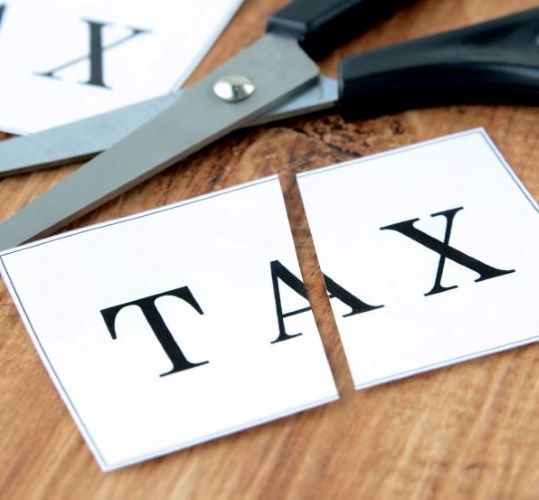On December 20, 2019, the President of the United States signed into law The Tax Payer Certainty and Disaster Tax Relief Act of 2019 (Public Law No. 116-94) following the passage of the “Taxpayer Certainty and Disaster Tax Relief Act of 2019” (the “Disaster Act”) and HR 1865 – “Further Consolidated Appropriations Act, 2020”. The Act extends more than 30 Code provisions, generally through 2020. Below you will find summaries of some of the provisions you may find applicable to your situation.
Discharge of Qualified Principal Residence Indebtedness
Previously the discharge of indebtedness income from qualified principal residence debt, up to a $2 million limit ($1 million for married individuals filing separately), was, in tax years beginning before January 1, 2018, excluded from gross income. This exclusion didn’t apply to any debt discharged after December 31, 2017.
The new law extends this exclusion for two years, i.e., for discharges of indebtedness before January 1, 2021. It also modifies the exclusion to apply to qualified principal residence indebtedness that is discharged pursuant to a binding written agreement entered into before January 1, 2021. This applies to discharges of indebtedness after December 31, 2017.
Mortgage Insurance Premiums as Qualified Residence Interest
Previously, mortgage insurance premiums paid or accrued before January 1, 2018, by a taxpayer in connection with acquisition indebtedness with respect to the taxpayer’s qualified residence were treated as deductible qualified residence interest, subject to a phase-out based on the taxpayer’s adjusted gross income (AGI). The amount allowable as a deduction was phased out ratably by 10% for each $1,000 by which the taxpayer’s adjusted gross income exceeded $100,000 ($500 and $50,000, respectively, in the case of a married individual filing a separate return). Thus, the deduction wasn’t allowed if the taxpayer’s AGI exceeded $110,000 ($55,000 in the case of married individual filing a separate return).
The new law extends this treatment through 2020 for amounts paid or incurred after December 31, 2017.
Reduction in Medical Expense Deduction Floor
Currently the IRS Code provides that, individuals, for 2017 and 2018, could claim an itemized deduction for unreimbursed medical expenses to the extent that such expenses exceeded 7.5% of AGI. The new law extends this threshold of 7.5% for tax years beginning after December 31, 2018 and before January 1, 2021.
Deduction of Qualified Tuition and Related Expenses
Currently the IRS Code provides an above-the-line deduction for qualified tuition and related expenses for higher education. The deduction is capped at $4,000 for an individual whose AGI does not exceed $65,000 ($130,000 for joint filers) or $2,000 for an individual whose AGI does not exceed $80,000 ($160,000 for joint filers). The new law extends this deduction through 2020.
New Markets Tax Credit
The Code provides a New Markets Tax Credit which is available to both individual and corporate taxpayers and is equal to 39% of the capital invested in a qualified community development entity, a for profit or nonprofit entity that commits to the rules of the program, which in turn must loan to or invest substantially all of such capital in qualified businesses operating in low-income communities.
The new law provides a $5 billion New Markets Tax Credit allocation for 2020. The Disaster Act also extends for one year, through 2025, the carryover period for unused New Markets Tax Credits.
Employer Tax Credit for Paid Family and Medical Leave
The Code provides an employer credit for paid family and medical leave, which permits eligible employers to claim an elective general business credit based on eligible wages paid to qualifying employees with respect to family and medical leave. The credit is equal to 12.5% of eligible wages if the rate of payment is 50% of such wages and is increased by 0.25 percentage points (but not above 25%) for each percentage point that the rate of payment exceeds 50%. The maximum amount of family and medical leave that may be taken into account with respect to any qualifying employee is 12 weeks per tax year. The new law extends this credit through 2020.
Work Opportunity Tax Credit
The Code provides an elective general business credit to employers hiring individuals who are members of one or more of 10 targeted groups under the Work Opportunity Tax Credit program. The new law extends this credit through 2020.
Energy Efficient Homes Credit
The Code provides a credit for manufacturers of energy-efficient residential homes. An eligible contractor may claim a tax credit of $1,000 or $2,000 for the construction or manufacture of a new energy efficient home that meets qualifying criteria. The new law extends the credit for energy-efficient new homes to homes acquired before January 1, 2021.
Empowerment Zone Tax Incentives
The designation of an economically depressed census tract as an “Empowerment Zone” renders businesses and individual residents within such a Zone eligible for special empowerment zone tax incentives, including: the 20% wage credit under Code Sec. 1396; liberalized Code Sec. 179 expensing rules ($35,000 extra expensing and the break allowing only 50% of expensing eligible property to be counted for purposes of the investment-based phaseout of expensing); tax-exempt bond financing under Code Sec. 1394; and deferral under Code Sec. 1397B of capital gains tax on sale of qualified assets sold and replaced. The Empowerment Zone designations expired on December 31, 2017.
The new law extends through December 31, 2020, the period for which the designation of an empowerment zone is in effect. The Disaster Act also provides that where a nomination of an empowerment zone included a termination date of December 31, 2017, termination will not apply with respect to the designation if, after the date of the enactment of the Disaster Act, the entity that made such nomination amends the nomination, in such manner as the IRS may provide, to provide for a new termination date. This applies to tax years beginning after December 31, 2017.
Extension of Expensing Rules for Certain Productions
The Code provides a deduction for qualified film, television, and theatrical productions of up to $15 million of the aggregate cost ($20 million for certain areas) of a qualifying film, television, or theatrical production in the year the expenditure was incurred. The new law extends this deduction through 2020, for productions commencing after December 31, 2017.
Biodiesel and Renewable Diesel
The Code provides a $1.00-per-gallon tax credit for biodiesel and biodiesel mixtures, and the small agri-biodiesel producer credit of 10 cents per gallon. The new law extends the biodiesel fuels income tax credit through 2020.
Special excise tax credit. Notwithstanding any other provision of law, in the case of any biodiesel mixture credit properly determined under Code Sec. 6426(c) for the period beginning on January 1, 2018, and ending on with the close of the last calendar quarter beginning before the date of the enactment of the Disaster Act, the credit will be allowed, and any refund or payment attributable to the credit (including any payment under Code Sec. 6427(e)) will be made, only in such manner as IRS provides.
IRS will issue guidance within 30 days of the enactment of the Disaster Act providing for a one-time submission of claims covering periods described in the preceding sentence. The guidance will provide for a 180-day period for the submission of the claims (in such manner as prescribed by IRS) to begin no later than 30 days after the guidance is issued. The claims will be paid by IRS not later than 60 days after receipt. If IRS has not paid pursuant to a claim filed under this subsection within 60 days after the date of the filing of the claim, the claim will be paid with interest from that date determined by using the overpayment rate and method under Code Sec. 6621. Additionally, the Disaster Act amends the Code to treat renewable diesel the same as biodiesel, except there is no small producer credit.
Second-Generation Biofuel Producer Credit
A producer of qualified biofuel produced after December 31, 2008, could claim a credit, as part of the alcohol fuel credit, for each gallon of “qualified second-generation biofuel production.” The credit was equal to the “applicable amount” ($1.01) for each gallon of qualified second-generation biofuel production. This credit didn’t apply to second generation biofuel produced after December 31, 2018. The new law extends the credit for two years, i.e., for production before January 1, 2021.
Nonbusiness Energy Property
The Code provides a credit for purchases of nonbusiness energy property. The Code allows a credit of 10% of the amounts paid or incurred by the taxpayer for qualified energy improvements to the building envelope (windows, doors, skylights, and roofs) of principal residences. The Code allows credits of fixed dollar amounts ranging from $50 to $300 for energy-efficient property including furnaces, boilers, biomass stoves, heat pumps, water heaters, central air conditioners, and circulating fans, and is subject to a lifetime cap of $500. The new law extends this credit through 2020.
Qualified Fuel Cell Motor Vehicles
The Code provides a credit for purchases of new qualified fuel cell motor vehicles. The Code allows a credit of between $4,000 and $40,000, depending on the weight of the vehicle, for the purchase of such vehicles. Other vehicles, depending on their fuel efficiency, may qualify for an additional $1,000 to $4,000 credit. The new law extends this credit through 2020.
Alternative Fuel Refueling Property Credit
Under pre-Disaster Act law, a taxpayer could claim a 30% credit for the cost of installing non- hydrogen alternative vehicle refueling property for use in the taxpayer’s trade or business (up to $30,000 maximum per year per location) or installed at the taxpayer’s principal residence (up to $1,000 per year per location). This provision didn’t apply to property placed in service after December 31, 2017. The new law extends this credit so that it applies to property placed in service before January 1, 2021.
2-Wheeled Plug-In Electric Vehicle Credit
The Code provides a 10% credit for highway-capable, two-wheeled plug-in electric vehicles (capped at $2,500). Battery capacity within the vehicles must be greater than or equal to 2.5 kilowatt-hours. The new law extends this credit so that it applies to vehicles acquired before January. 1, 2021.
Credit for Electricity Produced from Certain Renewable Resources
An income tax credit is allowed for the production of electricity from qualified energy resources at qualified facilities (the “renewable electricity production credit”). Qualified energy resources means wind, closed-loop biomass, open-loop biomass, geothermal energy, solar energy, small irrigation power, municipal solid waste, qualified hydropower production, and marine and hydrokinetic renewable energy. Qualified facilities are, generally, facilities that generate electricity using qualified energy resources.
Under pre-Disaster Act law, qualifying facilities generating electricity using closed-loop biomass, open-loop biomass, geothermal energy, land fill gas and trash (both of which used municipal solid waste), qualified hydropower, and marine and hydrokinetic renewable energy facilities had to have begun constructions before January 1, 2018, to claim the credit.
In addition, under pre-Disaster Act law, taxpayers could elect to have qualified property which is part of a Code Sec. 45 qualified facility, which were placed in service after 2008 and the construction of which begins before January 1, 2018, treated as property eligible for an energy credit under Code Sec. 48.
The new law extends the date by which construction of a qualifying facility must begin, to before January 1, 2021, for the following facilities: qualifying closed-loop biomass, open-loop biomass, geothermal energy, land fill gas and trash, qualified hydropower, and marine and hydrokinetic renewable energy facilities.
In addition, the Disaster Act extends the above qualified facilities eligible to be treated as property for an energy credit under Code Sec. 48, to facilities which were placed in service after 2008 and the construction of which begins before January 1, 2021.
For wind facilities the construction of which begins in calendar year 2020, the Disaster Act reduces the credit by 40%.
Look-Through Rule for Related Controlled Foreign Corporations
The Code provides look-through treatment for payments of dividends, interest, rents, and royalties between related controlled foreign corporations. The new law extends this look-through treatment through 2020.
Credit for Health Insurance Costs of Eligible Individuals
The Code provides a refundable credit (commonly referred to as the health coverage tax credit or “HCTC”) equal to 72.5% of the premiums paid by certain individuals for coverage of the individual and qualifying family members under qualified health insurance. The new law extends the HCTC through 2020.
Special Allowance for Second Generation Biofuel Plant Property
The Code provides an additional first-year 50% bonus depreciation for cellulosic biofuel facilities. The new law extends this additional first-year 50% bonus depreciation to property placed into service before January 1, 2021.
Energy Efficient Commercial Buildings Deduction
The Code provides a deduction for energy efficiency improvements to lighting, heating, cooling, ventilation, and hot water systems of commercial buildings. This includes a $1.80 deduction per square foot for construction on qualified property. A partial $0.60 deduction per square foot is allowed if certain subsystems meet energy standards but the entire building does not, including the interior lighting systems, the heating, cooling, ventilation, and hot water systems, and the building envelope. The new law extends these deductions to property placed into service before January 1, 2021.
Extension and Clarification of Excise Tax Credits Relating to Alternative Fuels
A 50¢-per-gallon (or gasoline gallon equivalent for non-liquid fuel) excise tax credit was allowed against the Code Sec. 4041 retail fuel excise tax liability for alternative fuel sold for use or used by a taxpayer. A credit was also allowed against the Code Sec. 4081 removal at terminal excise tax liability for alternative fuel used to produce an alternative fuel mixture for sale or use in the taxpayer’s trade or business. A taxpayer could claim an excise tax refund (or, in some cases, a credit against income tax) to the extent the taxpayer’s alternative fuel or mixture excise tax credit exceeded the taxpayer’s Code Sec. 4041 or Code Sec. 4081 liability. The new law extends these incentives through 2020.
Classification of Certain Race Horses
The Code assigns a 3-year recovery period for race horses two years old or younger. The new law extends the 3-year recovery period to race horses two years old or younger placed in service before 2021.
7-Year Recovery Period for Motorsports Entertainment Complexes
The Code provides a 7-year recovery period for motorsports entertainment complexes, defined as a racing track facility that is permanently situated on land and that hosts one or more racing events within 36 months of the month it is placed in service. The new law extends the 7-year recovery period through 2020, applicable to property placed into service after December 31, 2017.
Indian Employment Credit
Currently, the Code provides a credit on the first $20,000 of qualified wages and qualified employee health insurance costs paid to or incurred by the employer with respect to each qualified employee who works on an Indian reservation. Generally, a qualified employee is someone who is an enrolled member of an Indian tribe or the spouse of an enrolled member; who performs substantially all of the services for the employer within an Indian reservation; and whose principal place of abode is on or near the reservation in which the services are performed. The credit is equal to 20% of the excess of eligible employee qualified wages and health insurance costs incurred during the current year over the amount of such wages and costs incurred by the employer during 1993. The credit didn’t apply for any tax year beginning after December 31, 2017.
The new law extends this credit to tax years beginning before January 1, 2021.





